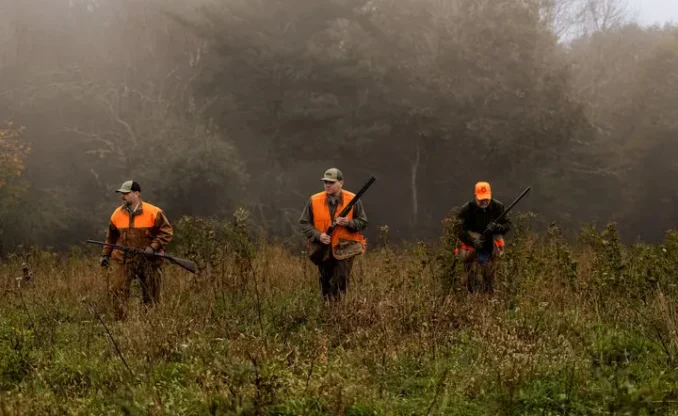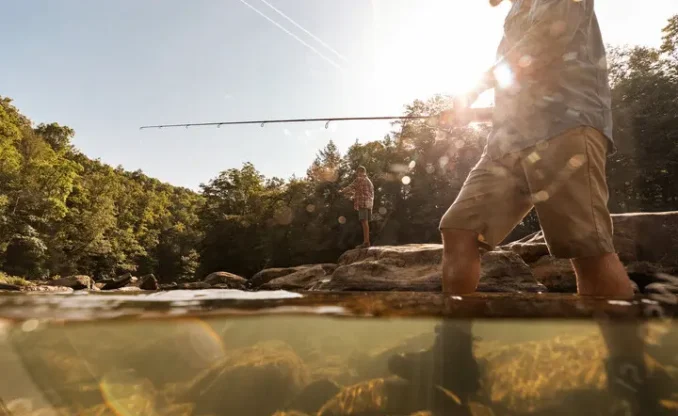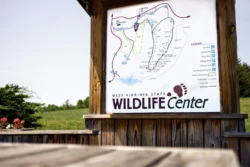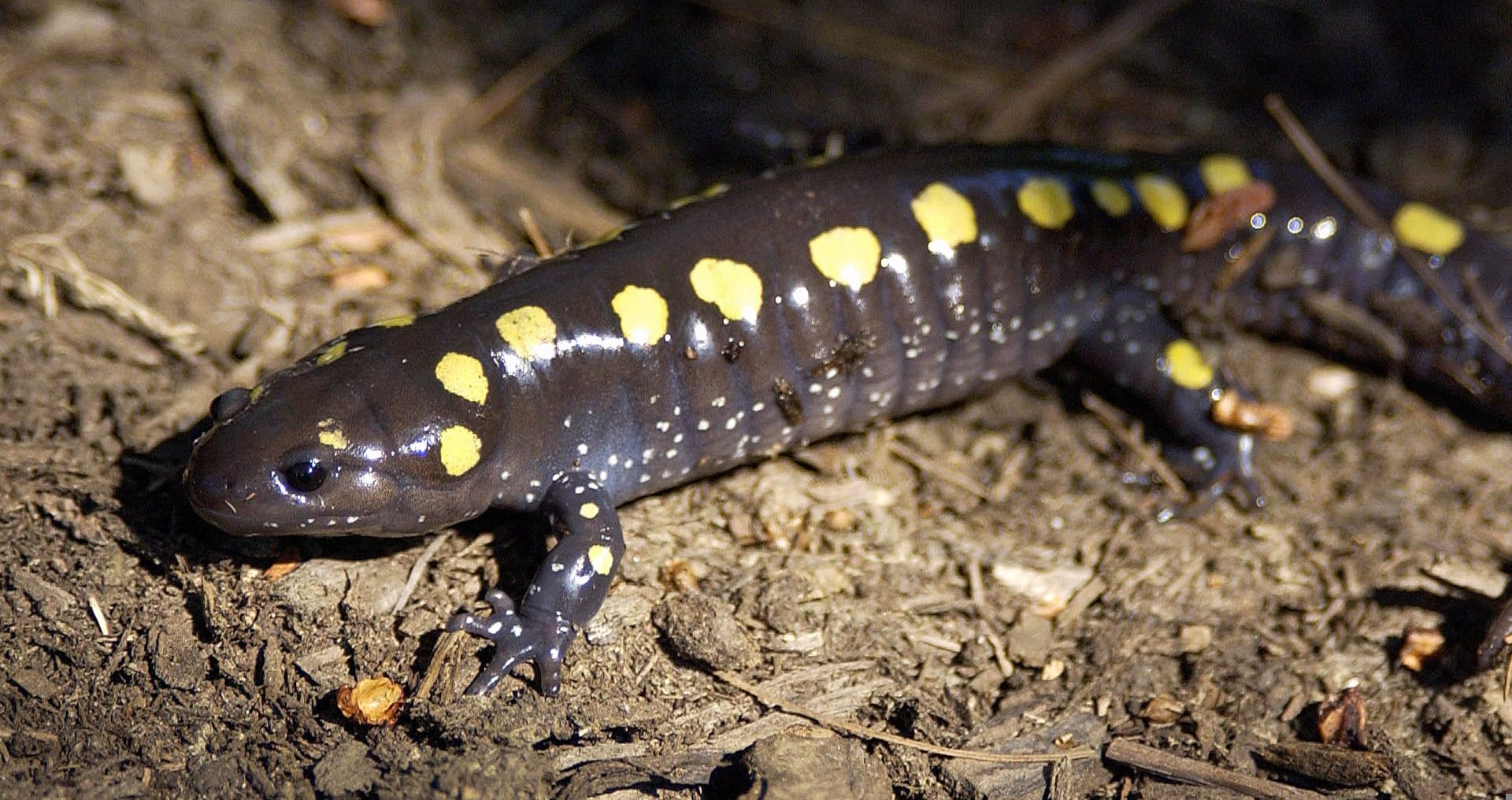West Virginia is home to a variety of salamander species, including two that are only found here in the Mountain State.
Salamanders today face a variety of threats, including deforestation, climate change, increased pollutants in aquatic environments and disease. That’s why West Virginia Division of Natural Resources biologists have been working hard to protect and enhance salamander habitats across the state.
Read on to learn more about West Virginia’s diverse salamanders.
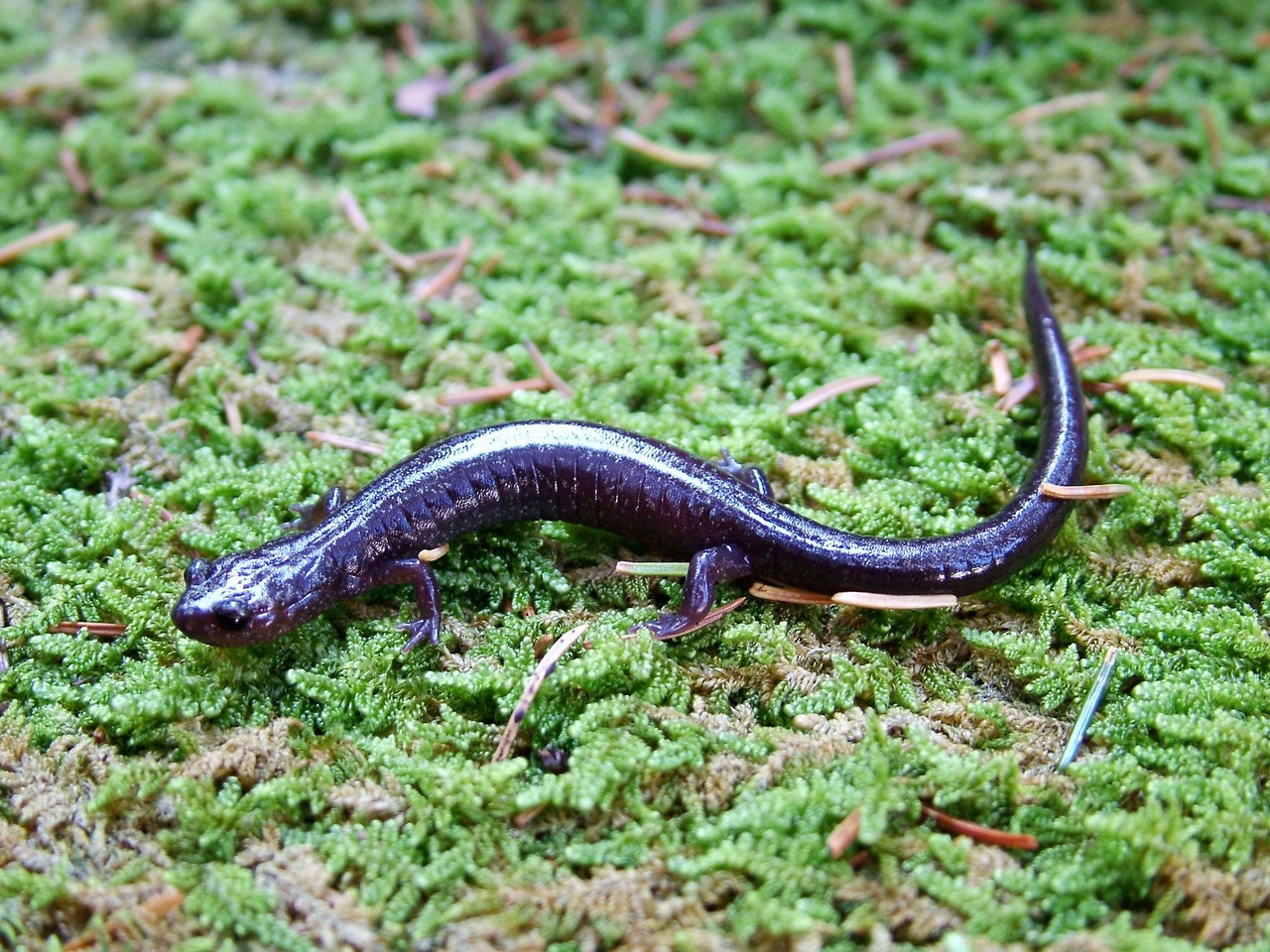
The Cheat Mountain Salamander. Photo by David Kayzak
The Mountain State is the only place in the world to find the Cheat Mountain salamander. This species is endemic to West Virginia, and can only be found on and around Cheat Mountain in the state’s eastern highlands. It is listed as threatened under the federal Endangered Species Act.
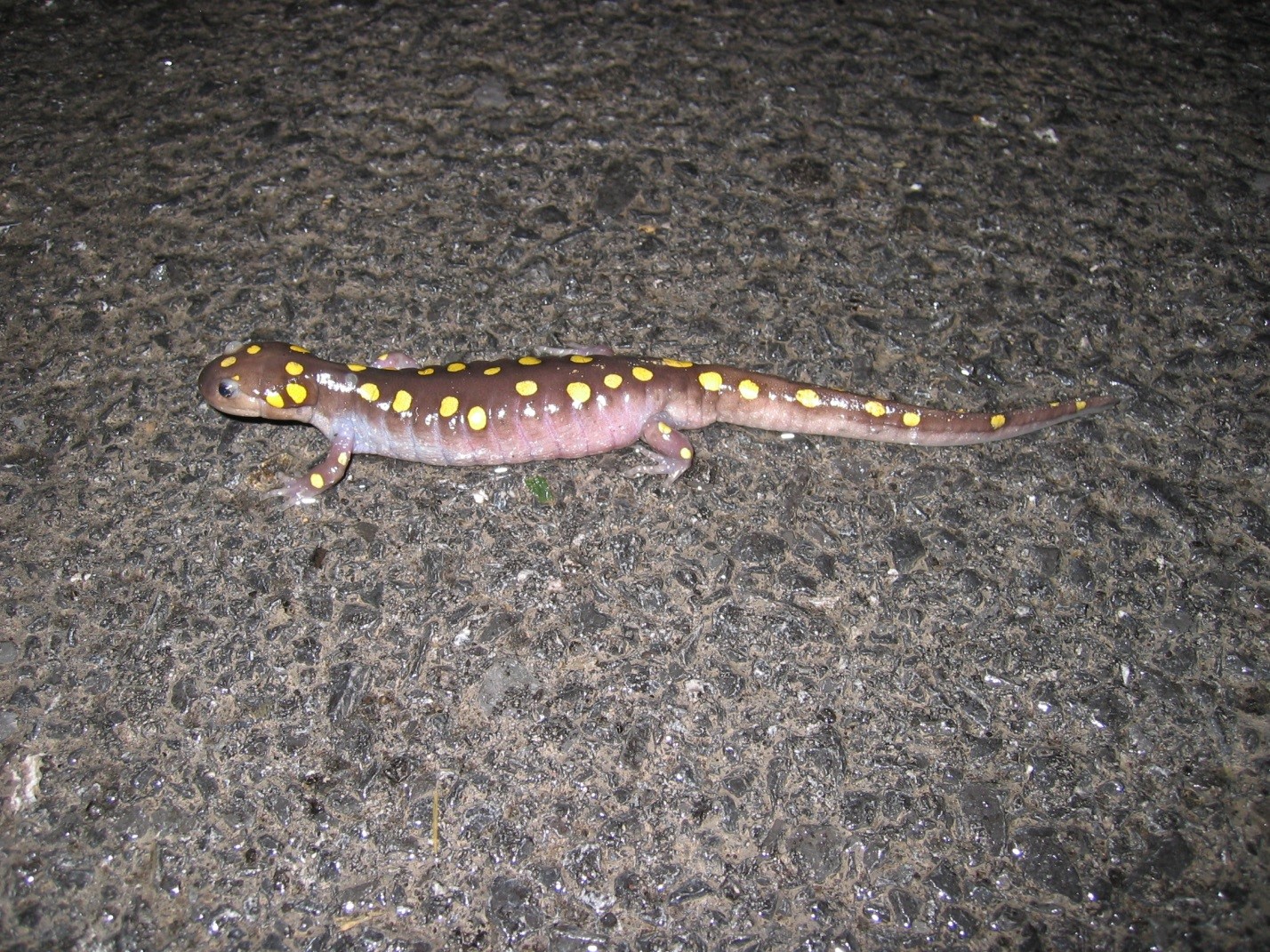
A Spotted Salamander. Photo by Kieran O’Malley
On rainy nights it is not uncommon to see salamanders on the move. When it’s raining, in late February through mid-March, some species, like this spotted salamander, will move in large numbers toward vernal pools and other temporary bodies of water where they will lay their eggs. Sometimes, this leads salamanders onto roads where they are susceptible to being hit by vehicles. If you see a salamander in the road, safely try to avoid hitting them, or move them across the road in the direction they were heading.
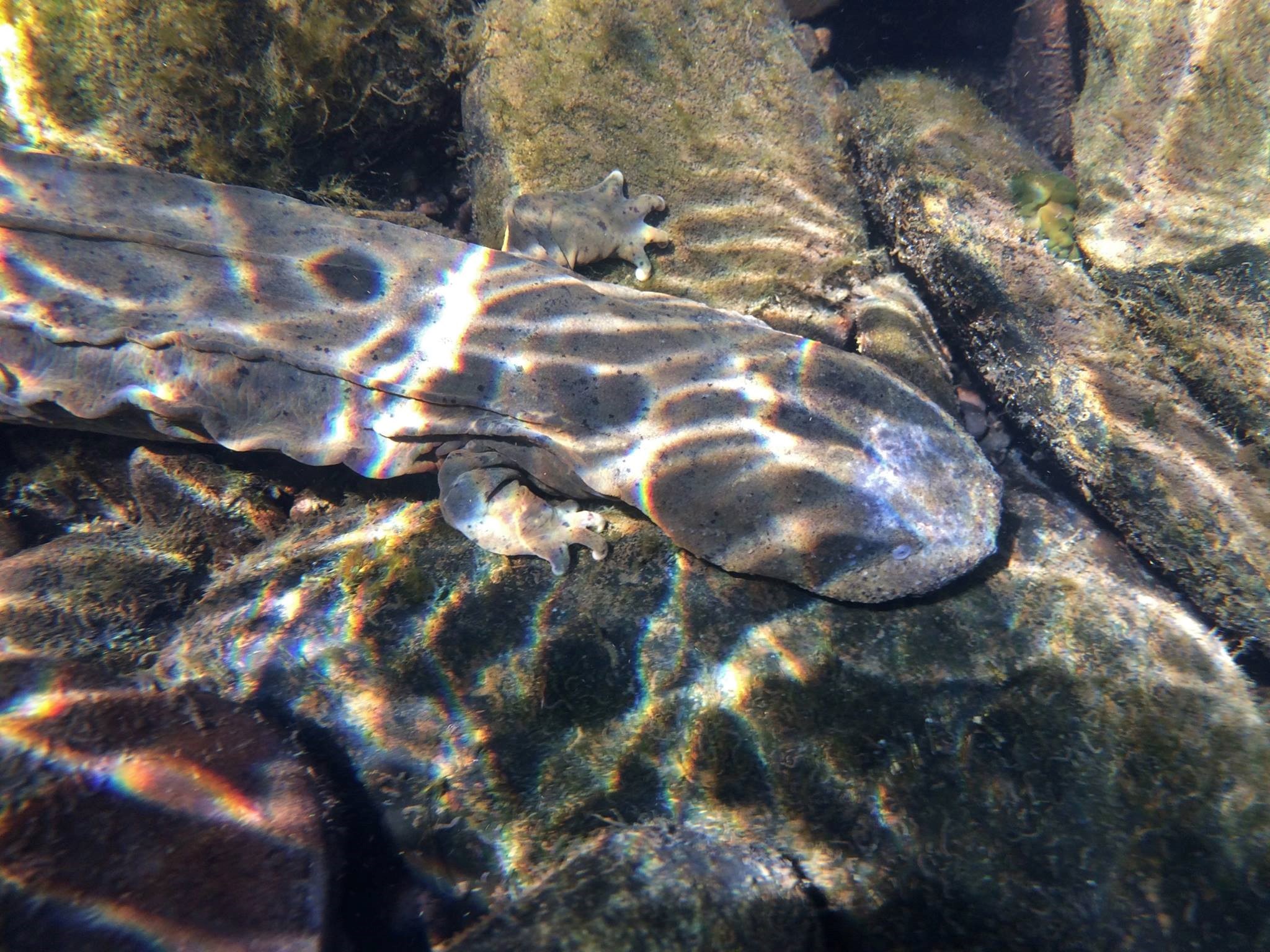
An Eastern Hellbender Salamander. Photo by John Mayersky
The Eastern hellbender is West Virginia’s and North America’s largest salamander species. Sadly, the clean, cool water streams the Eastern hellbender depends on are disappearing from West Virginia and other states throughout the species’ range. Because of this, the Eastern hellbender has disappeared from much of its range and has been petitioned for listing under the Endangered Species Act.
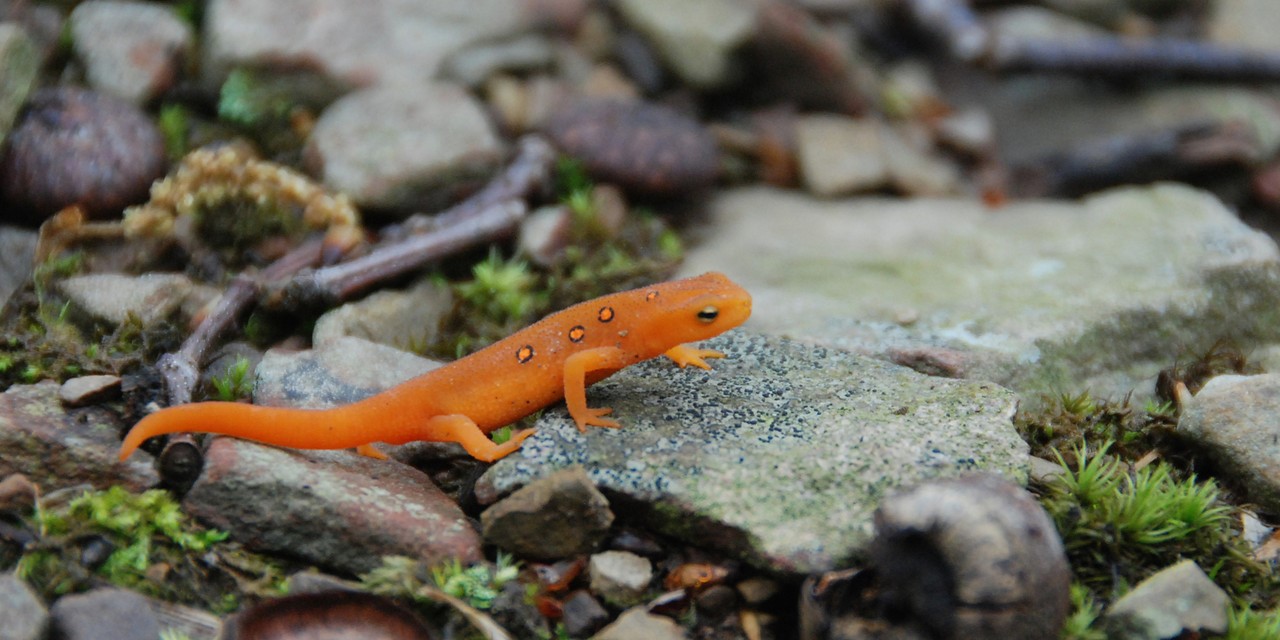
A Red-spotted Newt. Photo by David Kayzak
Don’t eat that! The red-spotted newt, or Eastern newt, is named for the red spots located on its back. These spots are used to warn potential predators that the red-spotted newt is toxic. This helps red-spotted newts avoid being eaten by fish and other potential predators. The above photo shows the red-spotted newt in the juvenile life stage, called a Red Eft. Newts are unique among salamanders because they live on land during their juvenile life stage (which can last up to six years) and live in water as larvae and adults.
Salamander Saturday, which is the first Saturday in May, is an initiative organized by the Foundation for the Conservation of Salamanders to raise awareness about these amphibians, their habitats and their role in the ecosystems. Join the conversation by using hashtags like #salamandersaturday, #wvwildlife, #salamanders and #amphibians on social media.

